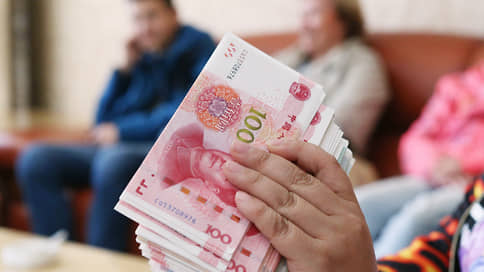Yuan trading volumes rose to their highest level since early 2024
[ad_1]

Exchange trading volume of yuan for delivery “tomorrow” on February 28 reached its maximum since the beginning of 2024 and fell just short of the absolute record set in mid-2023. Market participants also actively traded in the currencies of unfriendly countries. The revival of exchange trading occurred at the end of the month, when exporters complete the payment of taxes to the budget. Moreover, against the backdrop of the previous weakening of the ruble, they could postpone such actions until the last minute. By the end of next month, experts expect a repeat of the game to strengthen the Russian currency.
On Wednesday, February 28, the volume of exchange trading in yuan for delivery “tomorrow” reached a record value since the beginning of the year, amounting to 232 billion rubles. Moreover, this result became the second in the entire history of exchange trading in Chinese currency. The trading volume was higher only on July 7, 2023 – 239.6 billion rubles. It is noteworthy that high activity was observed throughout the entire trading day, even in the last hour of the trading session, when there was usually a significant decrease in activity, it remained at the level of previous periods – about 25 billion rubles, only a quarter lower than the peak values in the middle of the day.
Trading activity in “unfriendly” currencies also increased. The dollar trading volume increased by 27% during the day, to 110.6 billion rubles, showing the third result since the beginning of the year. Trading volume in the European currency increased by more than 42%, to RUB 65.3 billion—the maximum since December 22, 2023.
The high activity of market participants was accompanied by the strengthening of the Russian currency. So, as a result of trading, the yuan exchange rate decreased by 13 kopecks. (1%), to 12.6 rubles/CNY, the minimum since February 15.
The dollar exchange rate decreased by 90 kopecks, to 91.15 rubles/$, the euro exchange rate lost more than 1 ruble, falling back to 98.99 rubles/€. Thus, the quotations of the currencies of unfriendly countries returned to the values of two weeks ago.
Anton Siluanov, Minister of Finance, in an interview “RIA News” February 26:
“Recently, the exchange rate was more than 100 rubles per dollar, companies held back their foreign currency earnings. Now the exchange rate has stabilized, foreign exchange earnings are returning.”
The confident strengthening of the ruble and the sharp increase in trading volumes were largely associated with the actions of exporters, who were preparing rubles for settlements with the budget. On Wednesday, Russian companies were required to complete the transfer of mineral extraction tax, VAT, personal income tax and other taxes. According to Zenit Bank, the bulk of tax payments in February is 2.2 trillion rubles. “Revenue is not always sold evenly, and during the period of formation of a trend for the weakening of the ruble, companies may postpone sales to later dates. Therefore, most likely, we see a tactical overhang of the currency, and as part of the strategy, do not rush to sell in anticipation of sanctions news,” says Evgeny Koshelev, director of the office of market research and strategy of Rosbank.
In addition, the abnormally strong increase in euro trading activity may be associated with the financing of one of the previously announced transactions to purchase a local business from a non-resident, Vladimir Evstifeev, head of the analytical department of Zenit Bank, does not rule out. Distortions in volumes occur regularly and, according to Kommersant’s interlocutor at a large bank, may be due to the fact that market participants shift from the euro to the dollar and back, reducing, based on swap rates, their losses on the corresponding currency. This is indirectly confirmed by the higher level of the euro exchange rate against the US dollar on the local market, where at the end of the day it amounted to $1.086, while in the world it was around $1.084. “The popularity of the euro on the Russian market is declining faster than the dollar, so this surge in activity is short-term,” says Vladimir Evstifeev.
However, at the end of the week, the ruble will already lose the factor of support from the tax period, and its active strengthening may stop, says Sovcombank chief analyst Mikhail Vasiliev. In the coming weeks, he does not rule out the dollar exchange rate moving in the range of 90–94 rubles/$. “Further dynamics of exchange rates in the domestic market will be determined by the dynamics of the current account of the balance of payments of the Russian Federation, the factor of the mandatory sale of foreign currency earnings by the largest exporters, the volume of sales of yuan from reserves within the framework of budget operations, as well as ruble interest rates,” lists Mr. Vasiliev. Nevertheless, PSB chief analyst Denis Popov does not exclude the possibility that in the second half of March the dollar exchange rate may drop to the level of 90 rubles/$.
[ad_2]
Source link





